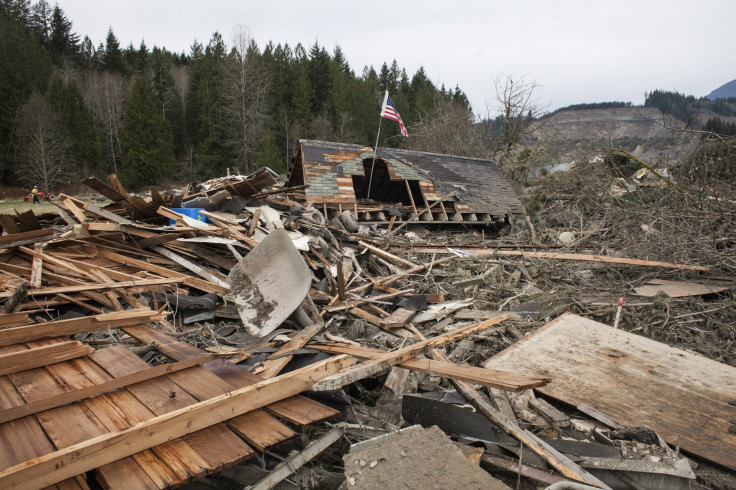Devastating Oso Landslide Was Not An Anomaly, New Study Shows

Last March, over 40 people were killed in a landslide in Oso, Washington, making it the deadliest such event in the U.S. history. According to a new study by researchers from the University of Washington, the landslide, which sent mud and debris tumbling over an area of 1 square mile, was far from a freak event and may very well have occurred several times in the past.
The authors said that the study shows that slopes in the area have collapsed every 500 years on average, disproving the notion that the previous slides in the area all occurred thousands of years ago when the ice sheets retreated.
“The soil in this area is all glacial material, so one hypothesis is the material could have fallen apart in a series of large landslides soon after the ice retreated, thousands of years ago,” Sean LaHusen, a doctoral student at the department of Earth and space sciences at the university, said in a statement, released earlier this week. “We found that that’s not the case — in fact, landslides have been continuing in recent history.”
In order to map the frequency of landslides in the region, the researchers used radiocarbon dating of trees and branches buried in earlier slides, which helped them put a date to these events, and reviewed erosion characteristics of the soil, which helped them place the events in the sequence they occurred.
“This is the first time this calibrated surface dating method has been used for landslide chronologies, and it seems to work really well,” LaHusen said. “It can provide some information about how often these events recur, which is the first step toward a regional risk analysis.”
The study indicated that while slopes in the area have collapsed every 500 years on average, the frequency has increased to once every 140 years over the past two millennia.
“This was well-known as an area of hillslope instability, but the question was: ‘Were the larger slides thousands of years old, or hundreds of years old?’ Now we can say that many of them are hundreds of years old,” co-author Alison Duvall, assistant professor of Earth and space sciences, said in the statement.
These results could have implications for determining future patterns of land use in the region, and in regulating logging, which has the potential to increase slope instability.
© Copyright IBTimes 2024. All rights reserved.





















